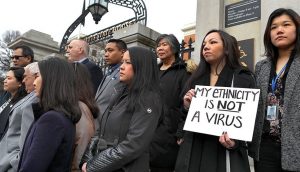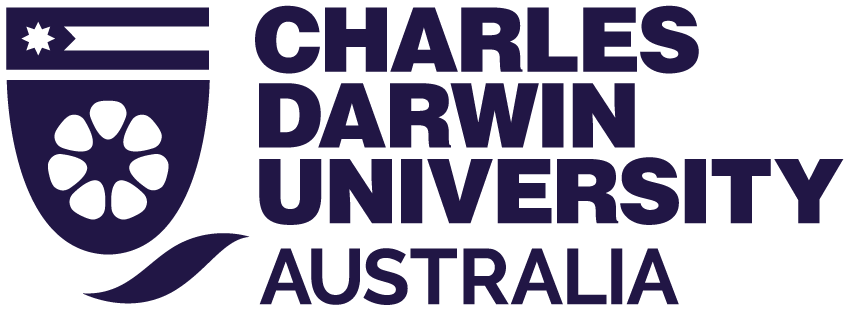4 Discrimination against Asians during COVID19
Covid19-related Discrimination

Watch the Video Katherine Oung published for the New York Times : How racism infected my highschool (March 14, 2020) :Coronavirus Racism Infected My High School
Caitlin Lockett
- INTRODUCTION:
1.1 Background
A safe space is one that encourages the sharing of personal experiences and controversial topics, without the fear of judgement or persecution. (Holly & Steiner, 2005). Cultural capability is the process of lifelong learning through the application of cultural knowledge and awareness, whereby a culturally safe space is created (Cummins, 2009). The aforementioned concepts are necessary for healthy border crossings within a community, and these concepts will be used to analyse several examples of discrimination; as has been evident throughout the Covid 19 pandemic. The topics of xenophobia and ethnocentrism in a global pandemic setting will also be explored. The presence of either of these in a community points to a subset of society lacking in cultural capabilities, and would suggest that an ‘unsafe space’ exists.
1.2 Aim
The aim of this report is to provide a summary, description and analysis of attitudes to race in the setting of a global pandemic. Utilizing examples of ethnocentrism and xenophobia, in both past and present scenarios, will aid in the analysis of the spaces which impact upon the lives of Asian people. Further to this, it will recommend improvements to develop the cultural safety of the space at a community level.
1.3 Scope
This report focuses on the communication styles employed by individuals interacting with others in their community, understanding bias, priming, coercive power relations; as well as privilege (Kandola, 2013). Xenophobia and the unsafe attitudes of ethnocentrism will be explored, as will be their relevance to the scenario (GonzalezFuentes, 2019).
- SUMMARY AND OBSERVATIONS:
2.1 Summary of the interaction:
The video scenario opened with the author, Katherine Oung, sharing the details of a xenophobic comment aimed at Chinese people, which was shared aloud in her school classroom by a peer (Oung, 2020). A Chinese-American herself, Katherine narrates the video and touches on some of the racism and violence that’s been occurring during the Coronavirus outbreak. The video is set in an American secondary school and includes news clips that depict racial violence and call for China to give a formal apology. Finally, it ended with some other historical examples of racial discrimination and fear in the context of a pandemic. The key people featured in the video included Katherine Oung herself, her mother, some of her school peers, news anchors, and an African-American man who assaulted a man of Asian appearance (Oung, 2020).
Observation Points:
- A news reporter asks that China give a formal apology to the world for the spread of Covid 19.
- The statement infers that the spread of the virus was China’s fault alone, and that any spread could have been completely prevented.
- Shifts blame to an entire country and citizens, showing a lack of cultural border crossing.
- Vilifies people who may be considered by others as being Chinese. Places people who don’t appear to be of Asian appearance in a privileged position.
- Coercive power relations present, ethnocentric attitudes shown in the language chosen.
- Comment made by a peer in Katherine Oung’s school classroom which depicts an unsafe space.
- “All Chinese people are disgusting; they will eat any type of animal, they’re dirty.” Discrimination against people of Asian descent, stereotyping and generalizing.
- Lack of border crossing from cultural to relational in the case of Katherine’s peer, lack of cultural awareness.
- White privilege driving the comment, no respect for or appreciation of diversity.
- Coercive power reinforced by the perpetuation of defamatory remarks.
- None is demonstrated in their discussion, but an understanding of the bias and discrimination present is highlighted.
- Caucasian peer vocally affirming the discrimination against Asian businesses and restaurants, acknowledges that people ‘aren’t boycotting Olive Garden’. Cultural border crossing of peers discussing and empathizing with Asian students.
- Equity is present in their discussion. White Privilege is acknowledged. Diversity of race and ethnicities is seen in the classroom (McIntosh, 1988).
- Collaborative relations of power in a Caucasian peer’s vocal support, speaking against the discrimination facing Asians in their community.
- ANALYSIS:
3.1 White Privilege
Katherine’s white peers have privilege, just for being white and not of Asian appearance (McIntosh, 1988). This white privilege creates disparity and contributes to the creation of an unsafe learning space. This is further highlighted by the racist and ethnocentric comment made by a white peer, showing her perceived superiority over Asian people. In media statements white privilege is also present, most poignantly when a news presenter demands an apology from China, blaming them solely for the Covid 19 outbreak in America. The fear that this sort of reporting generates is weighty and is priming others with white privilege to take the same racial stance (Devakumar et al., 2020). People of Asian heritage are aware of the stereotypes and are fearful for their safety. Other members of the community are fearful for their safety, and as the levels of fear rise on both sides of the divide, so too does xenophobia and ethnocentrism. In the scenario, the colour of people’s skin defines their position of power and degree of privilege. Coupled with fear and misinformation, these things contribute to the unsafe space and show the lack of community cultural awareness (Devakumar et al., 2020).
3.2 Managing Bias
Kandola (2013) highlights how bias is generated and fuelled, through priming and modelling certain behaviours or attitudes. This is most clearly seen in the media’s reporting of the Covid 19 virus’ origins and consequential spread. As mainstream media relies on the sensationalism of stories to boost audience engagement, priming communities to be fearful of Asian people has a similar effect. This creates and fuels an unsafe space in the community, one which can carry over into professional and academic settings. This bias is again demonstrated in Katherine’s school, where a racist remark is made with no consequences (Oung, 2020). The permission of this kind of language in schools is dangerous, as it instils ethnocentric and racist ideologies in children (Oung, 2020).
3.3 Relations of Power
Language and communication tools play a large part in both coercive and collaborative relations of power (Cummins, 2009). Hateful language that targets someone based on their ethnicity is an example of coercive power and suppresses the individual’s ontology (Cummins, 2009). Examples of this are seen in racial slurs and hate speech, as well as in the comment made by Katherine’s peer saying that “Everyone knows Asian’s are gross” (Oung, 2020). In contrast, another interaction between students in a classroom shows collaborative and generative relations; as well as border crossings (Cummins, 2009). A Chinese American student expresses frustration as Chinese businesses being targeted and avoided by the community, while Italian businesses thrive; despite the high mortality rate and incidence of Covid 19 in Italy. White classmates share in her frustration and demonstrate healthy and analytical collaborative relations of power. This generative interaction is well informed and collaborative in nature, supporting the cultural safety of the learning space (Bernstein et al., 2019).
3.4 Ethnocentrism and Xenophobia
Ethnocentrism is a perceived superiority and preference for a certain culture or race, above and to the exclusion of any other (Gonzalez-Fuentes, 2019). Xenophobia is a fear of, or prejudice against people of certain cultures and countries. In combining the two, the result is that one race is perceived as elite and the global preference (Kalunta-Crumpton, 2001). This idea is opposing cultural capability and cultural safety, instead fostering racism and racial violence. Such attitudes were seen in WWII with Hitler’s regime and racial cleansing, or mass genocide (Kalunta-Crumpton, 2001). The priming and persuasive coercive power led people to believe that Jews were dirty and deserving of different treatment, their equity and rights non-existent. Such a devastating example in the world’s history highlights the need to address potential rises in ethnocentrism and xenophobia (Gonzalez-Fuentes, 2019). Racially-motivated violence, as is seen in the video from New York Times and reported through other media outlets, gives evidence of a spike in racial hatred aimed at Asians. The focus on China being the origin of the Covid 19 virus is fact, however, is limited in depth given that no official investigation has been undertaken. Additionally, the few proven facts about China’s involvement in Covid 19 have given rise to countless opinions and theories with no proof of their accuracy.
- RECOMMENDATIONS:
4.1 Privilege
Open discussions about white privilege, and acknowledging that it exists, helps to break down the walls that separate both sides (McIntosh, 1988). A sustained and conscious effort to treat people equitably and fairly, irrespective of race, will facilitate more equitable interactions.
4.2 Managing Bias
The community as a whole must take some responsibility for this, as bias is inherent and present in everyday life (Kandola, 2013). People who hold a position of influence, power or authority should be held responsible for providing unbiased opinions. Regardless of bias held, setting fairness as the goal will aid in the creation of safe spaces (Kandola, 2013).
4.3 Relations of Power
Ongoing education around the issue of how we relate to others is imperative to our progression as a culturally safe and appropriate society. Teaching around Coercive vs. Collaborative Relations of Power could be introduced in school lessons concerning global studies, communications and life skills. The shifting and manipulation of power in interactions is both instinctive and learned, therefore, education and self-awareness are key to shifting power in a collaborative direction and building safe spaces (Bernstein et al., 2019; Cummins, 2009).
4.4 Ethnocentrism and Xenophobia
To avoid extremist and xenophobic outbursts, the issues of cultural capability and border crossings are vital. An appreciation and acceptance of all cultures and ethnicities removes fear and mitigates against racially-motivated violence (Gonzalez-Fuentes, 2019). This multifaceted issue is the by-product of consistently unsafe spaces, therefore, working towards the creation of safe spaces is a way to preserve individuals’ ontology and culture (GonzalezFuentes, 2019; Cummins, 2009). Individual community centres can assess their safe spaces and look at the provision of facilities to minority groups, supporting the creation and sustainability of new safe spaces.
SUMMARY AND CONCLUSIONS:
In conclusion, self-awareness and education are foundational tools with which safe spaces are preserved in communities. People groups lacking in cultural awareness and cultural intelligence often cannot manage bias and make cultural border crossings. This impacts on the ability to form collaborative and generative interactions with others, affecting the safety of the space. Respect of our differences as people mitigates the risk of ethnocentric and xenophobic attitudes arising. Culturally safe spaces are vital for the health of culturally-diverse communities and allow them to function free from fear, embracing differences and promoting inclusivity.
Media Attributions
- Coronavirus-Racism_870x500

